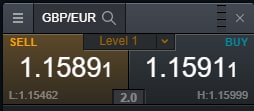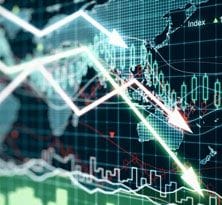What is the difference between the bid price and ask price?
The bid price is the highest price a buyer is prepared to pay for a financial instrument, while the ask price is the lowest price a seller will accept for the instrument. The difference between the bid price and ask price is often referred to as the bid-ask spread.
Before attempting to trade in any market, it helps to become accustomed to the trading terminology used. Understanding basic trading terms and the market forces associated with them provides a good foundation for any trader. The difference between the bid price and ask price is one of the most basic but crucial theories to understand in trading.
To understand the difference between the bid price and the ask price of a financial instrument, you must first understand the current price from a trading perspective.
Current price
The current price, also known as the market value, is the actual selling price of an asset on the stock exchange. The current price is constantly fluctuating and is determined by the price at which that asset last traded.
Basic economic theory states that the current price is determined where the market forces of supply and demand meet. Fluctuations to either supply or demand cause the current price to rise and fall respectively.
The current price on a market exchange is therefore decided by the most recent amount that was paid for an asset by a trader. It’s the consequence of financial traders, investors and brokers interacting with one another within a given market.
Bid price and ask price
As the current price represents the market value of a financial instrument, the bid and ask prices represent the maximum buying and minimum selling price respectively.
The bid price, more commonly known as simply the ‘bid’, is defined as the maximum price a buyer is willing to pay for a financial instrument.
The ask price, usually referred to as the ‘ask’, is defined as the minimum price a seller is willing to accept for the instrument.
The bid price is normally higher than the current price of the instrument, while the ask price is usually lower than the current price. The difference between the bid price and ask price is commonly known as the bid and ask spread, bid-offer spread or bid-ask spread.
What is the bid-ask spread?
The bid-ask spread, or the bid and ask spread, is the difference between the bid price and the ask price of an instrument. So the difference in price between someone buying a stock and someone selling a stock represents the bid-ask spread.
Both the bid and ask prices are displayed in real-time and are constantly updating. The changing difference between the two prices is a key indicator of the liquidity of the market and the size of the transaction cost.
High liquidity in a market is often caused by a large number of orders to buy and sell in that market. This liquidity enables you to buy and sell closer to the market value price. Therefore, the bid-ask spread tightens the more liquid a market is. The opposite is true when the market is less liquid. In this case, the spread increases as it’s harder to sell and buy near the market value due to a lack of volume in trades.
Bid and ask price example
In the context of CMC Markets’ trading platform, the bid and ask prices are represented by ‘BUY’ and ‘SELL’ respectively in any price quote window. The number ‘2.0’ between the buy and sell price represents the bid-ask or buy-sell spread. This spread is derived by subtracting the sell price from the buy price.

1.1591 (buy price) – 1.1589 (sell price) = 0.0002.
The spread is always based on the last large number in the price quote, so it equates to a spread of 2 in this instance.
CMC Markets offers trading opportunities on a range of markets, including forex, indices, cryptocurrencies, commodities, shares and treasuries. To get an overview of the minimum spreads we offer on our instruments, see our range of markets page.
Want to learn more? Improve your financial and trading knowledge with our extensive glossary of key trading terms and definitions.
Ready to practice trading? Open a demo account and get started in minutes.

Experience our powerful online platform with pattern recognition scanner, price alerts and module linking.
- Fill in our short form and start trading
- Explore our intuitive trading platform
- Trade the markets risk-free